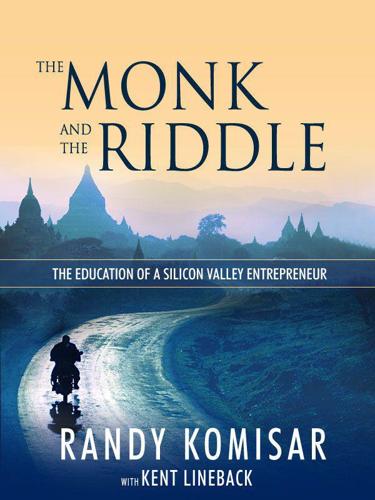
The Monk and the Riddle: The Education of a Silicon Valley Entrepreneur
by
Randy Komisar
Published 15 Mar 2000
I traded the thrust and parry of litigation for ongoing relationships with byte-sized entrepreneurs, coders. They were creating the real value in the food chain of the PC revolution: software. I became engrossed in working with these inventors, Page 74 who were assembling new businesses out of Silicon Valley garage shops. They turned out to be people I could easily relate to, more like the artists the Banzini Brothers had managed in the rock and roll promotion business than like my litigation colleagues and clients. They reminded me of my passionate, offbeat high school and college friends. They were talent.
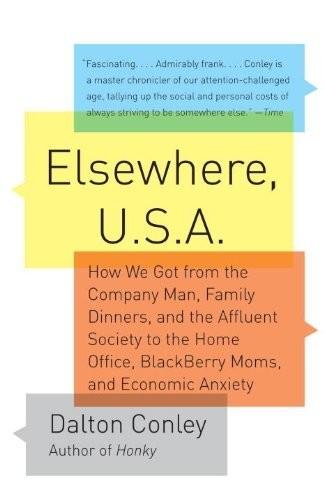
Elsewhere, U.S.A: How We Got From the Company Man, Family Dinners, and the Affluent Society to the Home Office, BlackBerry Moms,and Economic Anxiety
by
Dalton Conley
Published 27 Dec 2008
One Plus a Hundred Zeros Welcome to Your (N)Office If there is any “center” or “downtown” to our new economy (and to Elsewhere, U.S.A., for that matter) it is just off the 101 Freeway in Mountain View, California. The headquarters of the information economy, so to speak, is Google.com, whose mission, elegantly stated, is “to organize the world’s information and make it universally accessible and useful.” Started as a Ph.D. research project, and incorporated in a friend’s Silicon Valley garage, Google epitomizes the Elsewhere Ethic better than any other company. The very service itself could not be more representative of the networked or Elsewhere Society: the search engine deploys an algorithm that ranks Web pages’ appropriateness not so much by their own content as by the number of other pages that refer (“link”) to them.

What About Me?: The Struggle for Identity in a Market-Based Society
by
Paul Verhaeghe
Published 26 Mar 2014
This educational meritocracy was introduced more or less simultaneously everywhere in Europe. Its American counterpart is older and of quite a different order. It is the myth of the young bootblack who, thanks to his own efforts, rises to become a coal magnate; of the newspaper boy who makes it to media tycoon; or, most recently, of the youth in the Silicon Valley garage who ends up head of a multinational online company. In short, it is the American Dream. This is the economic take on meritocracy, which ties in very closely with the notion of ‘negative liberty’: the individual may not be hampered by others, least of all by a paternalistic state. Americans have traditionally regarded this from a purely economic perspective — no state intervention in business — whereas the original European interpretation was predominantly political: a state should not impose ideologies on its people.

Nine Algorithms That Changed the Future: The Ingenious Ideas That Drive Today's Computers
by
John MacCormick
and
Chris Bishop
Published 27 Dec 2011
And as we will see in the next chapter, the emergence of a new type of ranking algorithm was enough to eclipse AltaVista, vaulting Google into the forefront of the world of web search. 3 PageRank: The Technology That Launched Google The Star Trek computer doesn't seem that interesting. They ask it random questions, it thinks for a while. I think we can do better than that. —LARRY PAGE (Google cofounder) Architecturally speaking, the garage is typically a humble entity. But in Silicon Valley, garages have a special entrepreneurial significance: many of the great Silicon Valley technology companies were born, or at least incubated, in a garage. This is not a trend that began in the dot-com boom of the 1990s. Over 50 years earlier—in 1939, with the world economy still reeling from the Great Depression—Hewlett-Packard got underway in Dave Hewlett's garage in Palo Alto, California.
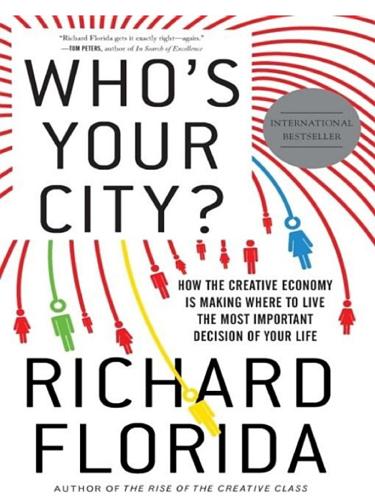
Who's Your City?: How the Creative Economy Is Making Where to Live the Most Important Decision of Your Life
by
Richard Florida
Published 28 Jun 2009
That’s what Jane Jacobs was getting at when she famously wrote, “New ideas require old buildings.” These spaces, formerly abundant in places like Silicon Valley and downtown New York City, are where everyone from Steve Jobs to Bob Dylan got their start. Cheap space in these towns is now hard to come by. Several Silicon Valley garages that witnessed high-tech start-ups in the 1990s have been turned into museums. When housing prices rise and buildings are converted into expensive condos or high-end retail shops, venues for fostering creativity disappear. Extreme real estate prices also hinder the ability of places to attract and amass new talent.

Vassal State
by
Angus Hanton
Published 25 Mar 2024
As Simon Sinek, motivational speaker and author, says: ‘People don’t buy what you do – they buy why you do it.’33 To convey why they run their businesses, each company promotes an origin story, the most powerful element of which is often the ‘founder’s story’. It is bizarre to see how many of these tales contain a version of ‘the Silicon Valley garage myth’, but there are good reasons for spinning the yarn. A small garage in Palo Alto was the 1938 birthplace of Hewlett-Packard (HP). Here, William Hewlett and David Packard started building the pioneering audio oscillator that revolutionised sound engineering. Today, that garage appears in the US National Register of Historic Places with a plaque which reads: ‘Birthplace of Silicon Valley’.34 Microsoft also claims to have been started in a garage in 1975 by college dropout Bill Gates, and Apple fans insist that Steve Jobs and Steve Wozniak built their computers in a garage, though ‘Woz’ has since explained that it was little more than a drop-off point.

Floating City: A Rogue Sociologist Lost and Found in New York's Underground Economy
by
Sudhir Venkatesh
Published 11 Sep 2013
Once again, I wondered if they could be said to make up a distinct social class of their own, a kind of third class suspended between the two worlds they inhabited. Maybe that was too highfalutin’ a question. But “criminal” was such an imperfect word to describe them, considered in the fullness of their actions. These people were seekers. As much as the peppiest young entrepreneur in any Silicon Valley garage, they dreamed of changing their worlds. And in their daily lives as ordinary citizens and consumers, their illegitimate earnings helped many legitimate businesses stay afloat. In that sense, they were pillars of the community. Again, my instinct told me that the answer lay in connecting the underworld to the overworld.
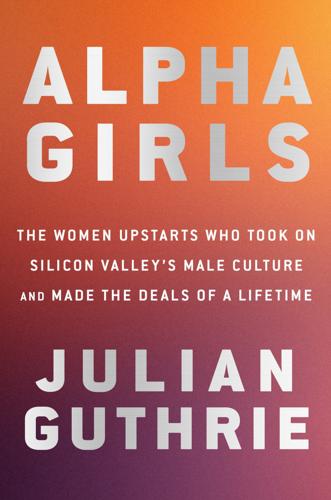
Alpha Girls: The Women Upstarts Who Took on Silicon Valley's Male Culture and Made the Deals of a Lifetime
by
Julian Guthrie
Published 15 Nov 2019
“We had enough good hits that I feel encouraged,” Shlomo said after the meetings. He thanked Theresia for suggesting they visit the banks. Shlomo had co-founded his original company, Check Point, in his grandmother’s sweltering Tel Aviv apartment. He liked to say that Check Point was the “Jewish grandmother version of the Silicon Valley garage start-up.” He and his partners tested the software for Check Point on two borrowed Sun workstations that they named Monk and Dylan (for Thelonious and Bob). Check Point wasn’t the first firewall security company, but it was embraced as the first firewall security company that was easy to use.
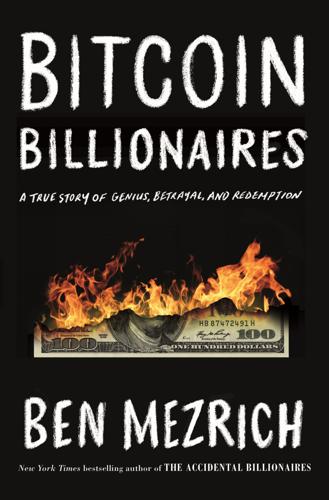
Bitcoin Billionaires: A True Story of Genius, Betrayal, and Redemption
by
Ben Mezrich
Published 20 May 2019
They might even impress a judge, or someone else, enough with what they built to attract an investment. Some of the hackers in the room would be elite programmers, others just tourists and civilians, but the idea that they were all working on Bitcoin businesses, a camaraderie of young, motivated people—it made Cameron think that anything in the space was possible. It was how he pictured Silicon Valley garages two decades ago; but this time, the Valley had missed the boat. Charlie stopped in the hallway, still ten feet from the double doors. He opened his fingers, and Cameron saw an expertly rolled joint, as thick and long as something you’d see in a rap video. “Really?” Tyler said as Charlie pulled a lighter out of his jacket pocket.

Everything Is Obvious: *Once You Know the Answer
by
Duncan J. Watts
Published 28 Mar 2011
To illustrate this problem, let’s step away from bankers for a moment and ask a less-fashionable question: To what extent should Steve Jobs, founder and CEO of Apple Inc., be credited with Apple’s recent success? Conventional wisdom holds that he is largely responsible for it, and not without reason. Since Jobs returned in the late 1990s to lead the company that he founded in 1976 with Steve Wozniak in a Silicon Valley garage, its fortunes have undergone a dramatic resurgence, producing a string of hit products like the iMac, the iPod, and the iPhone. As of the end of 2009, Apple had outperformed the overall stock market and its industry peers by about 150 percent over the previous six years, and in May 2010 Apple overtook Microsoft to become the most valuable technology company in the world.

Bold: How to Go Big, Create Wealth and Impact the World
by
Peter H. Diamandis
and
Steven Kotler
Published 3 Feb 2015
How did Kodak—a hundred-year-old behemoth with 140,000 employees and a 1996 value of $28 billion—fail to take advantage of the most important photographic technology since roll film and end up in bankruptcy court? Simultaneously, how did a handful of entrepreneurs working out of the proverbial Silicon Valley garage go from start-up to a billion-dollar buyout in eighteen months, with a little more than a dozen employees? Simple: Instagram was an exponential organization. Welcome to the New Kodak Moment—the moment when an exponential force puts a linear company out of business. As we shall see over and over again, these New Kodak Moments are not aberrations.

The Infinite Machine: How an Army of Crypto-Hackers Is Building the Next Internet With Ethereum
by
Camila Russo
Published 13 Jul 2020
If the community managed to send two and a half Bitcoins, he would release the rest of the article. It worked, and he ended up getting something like $20–$40 per piece. The coins were coming in from anonymous users everywhere in the world, and that was another aspect he loved about cryptocurrency. Unlike past technological innovations cooked up in Silicon Valley garages and universities, this innovation was truly global. In just under three short years, Vitalik had gone from Bitcoin skeptic to writing about Bitcoin to working on Bitcoin projects. After about six months on the road, his world tour ended in San Francisco. As he climbed up and down the city’s steep hills, he continued to refine the idea of a new blockchain that could become the platform enabling any decentralized, censorship-resistant application imaginable.
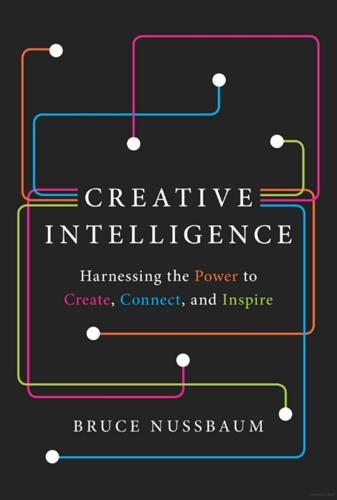
Creative Intelligence: Harnessing the Power to Create, Connect, and Inspire
by
Bruce Nussbaum
Published 5 Mar 2013
And many are trying to achieve this same creative spirit today—Boeing has begun using new composite materials for its 787 Dreamliner, IBM has moved into crowdsourcing and wiring cities for innovation, and Corning is developing new glass for iPhone screens. But few companies have enjoyed the success that Hewlett-Packard had in its heyday. From its founding in 1939 in a Silicon Valley garage, HP had the kind of culture that today’s start-up entrepreneurs would love to emulate. Managers gave their employees, especially the engineers in HP labs, the freedom to play, to mine knowledge from sources that interested them, and to frame ideas however they wanted. Just as important, HP provided a network of wandering general managers who moved from lab to lab, screening inventions and deciding where to invest.
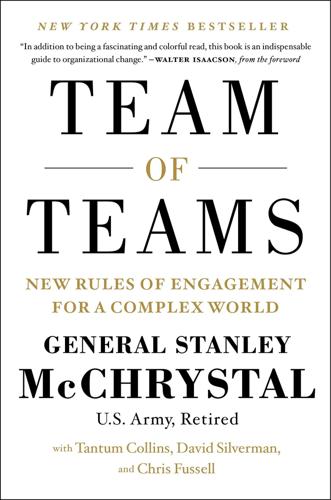
Team of Teams: New Rules of Engagement for a Complex World
by
General Stanley McChrystal
,
Tantum Collins
,
David Silverman
and
Chris Fussell
Published 11 May 2015
They were tough, flexible, and resilient, but more often than not they were poorly trained and underresourced. They were also dogmatic and offensively extreme in their conduct and views. Their strengths and capabilities were multiplied by a convergence of twenty-first-century factors, of which AQI was simply the lucky beneficiary. Much like a Silicon Valley garage start-up that rides an idea or product that is well timed rather than uniquely brilliant to an absurd level of wealth, AQI happened to step onto an elevator that was headed up. Second, and most critically, these factors were not unique to Iraq, or to warfare. They are affecting almost all of us in our lives and organizations every day.

Brotopia: Breaking Up the Boys' Club of Silicon Valley
by
Emily Chang
Published 6 Feb 2018
Now the contrarian “misfit,” who once called the value of diversity a myth, was whispering into the ear of the man holding the most powerful office in the world. 3 GOOGLE: WHEN GOOD INTENTIONS AREN’T ENOUGH IN 1998, WHEN TWO quirky and very academic Stanford students named Larry Page and Sergey Brin wanted to start a search engine business, they needed an office. Like many great tech entrepreneurs before them, they looked around for an underutilized Silicon Valley garage. Through mutual friends, they found a landlord in Susan Wojcicki, who wasn’t just any Menlo Park homeowner. An up-and-coming businesswoman, Wojcicki, then thirty years old, had worked as a management consultant at Bain & Company and then in marketing at Intel. She had also recently finished her MBA at the Anderson School of Management at UCLA, and she displayed her business acumen in the rent she charged for the garage: $1,700 a month, which was above the going rate.

Digital Wars: Apple, Google, Microsoft and the Battle for the Internet
by
Charles Arthur
Published 3 Mar 2012
An existing rival such as Sun Microsystems, or database maker Oracle, or web browser company Netscape? No, none of those, said Gates: ‘I fear someone in a garage who is devising something completely new.’ Obviously, he didn’t know where, or what, or who; as Auletta noted, ‘He just knew that innovation was usually the enemy of established companies.’1 Why a garage? Because Silicon Valley garages are famous breeding grounds for innovative, disruptive companies that could react faster to conditions and use the newest technology, buoyed by venture capital funding and not burdened with bureaucracy and quarterly earnings reports. Gates is the classic example of what the writer Malcolm Gladwell calls ‘outliers’:2 people who have spent enormous amounts of time learning and then refining their skills – in Gates’s case, programming.
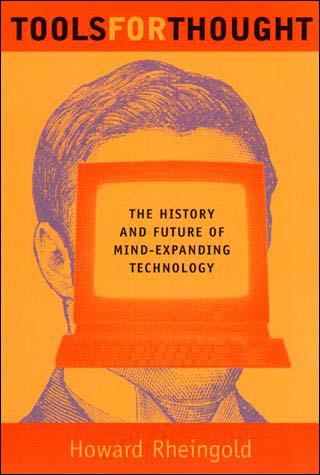
Tools for Thought: The History and Future of Mind-Expanding Technology
by
Howard Rheingold
Published 14 May 2000
Roberts eventually sold it. In 1977, Commodore, Heathkit, and Radio Shack began marketing personal computers based on the interconnection method established by the Altair -- still known as the S100 bus. Steve Wozniak and Steve Jobs started selling Apples in 1977 and now are firmly established in the annals of Silicon Valley garage-workshop mythology -- the Hewlett and Packard of the seventies generation. Gates and Allen became Microsoft, Inc. Their company sold over $50 million worth of software to personal computer users in 1983. Microsoft is aiming for the hundred-million-dollar category, and Gates still has a couple more years before he reaches the age of thirty.

Visual Thinking: The Hidden Gifts of People Who Think in Pictures, Patterns, and Abstractions
by
Temple Grandin, Ph.d.
Published 11 Oct 2022
What Steve Jobs accomplished was taking computers from gadgets that only computer hobbyists could use to a consumer product anyone could use. To make a beautiful computer functional, there needs to be a techie who can design the electronic circuits that will make it work. Steve Wozniak was the perfect partner for Jobs. Walter Isaacson writes, “It may have been the most significant meeting in a Silicon Valley garage since Hewlett went into Packard’s thirty-two years earlier.” Wozniak wrote in his book that all he wanted to do was design circuits and “come up with clever ideas and apply them.” Walter Isaacson writes of their collaboration, “Jobs had a bravado that . . . could be charismatic, even mesmerizing, but also cold and brutal.

Machines of Loving Grace: The Quest for Common Ground Between Humans and Robots
by
John Markoff
Published 24 Aug 2015
Certainly AI and robotics technologies will destroy a vast number of jobs, but they can also be used to extend humanity. Which path is taken will be determined entirely by individual human designers. Tandy Trower is a software engineer who once oversaw armies of software engineers at Microsoft Corporation, but now works from a cramped office in South Seattle. The four-room shop might be any Silicon Valley garage start-up. There are circuit boards and computers strewn in every direction, and there are robots. Many of them are toys, but several look suspiciously like extras from the movie Robot & Frank. The idea of developing a robot to act as a human caregiver speaks directly to the tensions between AI and IA approaches to robotics.

Googled: The End of the World as We Know It
by
Ken Auletta
Published 1 Jan 2009
Instead, he said, “I fear someone in a garage who is devising something completely new.” He had no idea where the garage might be—or even what country it might be in—nor could he guess the nature of the new technology. He just knew that innovation was usually the enemy of established companies. As it happens, in 1998, in a Silicon Valley garage, Bill Gates’s nightmare came alive courtesy of Larry Page and Sergey Brin. Page and Brin had met three years before, at orientation for incoming Stanford graduate students. They had much in common. Their fathers were college professors and their mothers worked in science; both were born in 1973 and raised in homes where issues were rigorously debated; both attended Montessori elementary schools, where they were granted freedom to study what they wished, and as public high school students they were besotted by computers; both were pursuing Ph.D.’s in computer science.
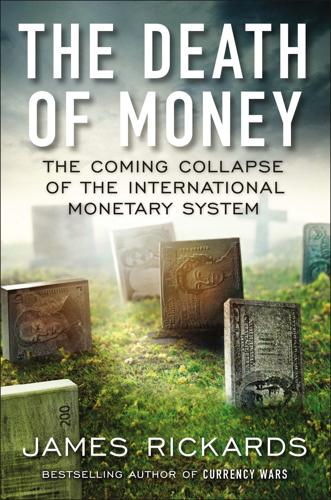
The Death of Money: The Coming Collapse of the International Monetary System
by
James Rickards
Published 7 Apr 2014
A hedge fund might not care about the origin of the hidden information—it can just piggyback on the trade. For the CIA, the observation became a clue. And the stakes were higher. Like any development project, Prophesy had its geek squad of programmers and systems administrators to design protocols for security, interconnectivity, and the user interface. The team combined the joy of a Silicon Valley garage start-up with the can-do culture of the CIA in a unique effort to preempt terrorism using the same information that viewers see every day on Bloomberg TV. The climax of Project Prophesy was a red team exercise in September 2003. Red teaming is a classic way of testing hypotheses and models by recruiting a group of experts as the “enemy,” then asking them to role-play scenarios designed to expose flaws in the original assumptions.
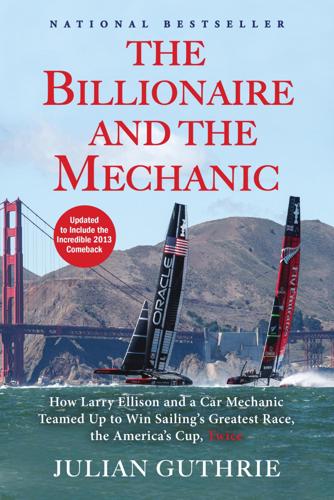
The Billionaire and the Mechanic: How Larry Ellison and a Car Mechanic Teamed Up to Win Sailing's Greatest Race, the Americas Cup, Twice
by
Julian Guthrie
Published 31 Mar 2014
A week later, Ehman met with Bill and Melinda Erkelens in their rented cottage in Newport. Ehman, with the Erkelenses and Chris Dickson, sat at the edge of a bed with a small card table before them and began to map out what needed to be done to compete for the America’s Cup. It was Oracle Racing 1.0, and the Silicon Valley garage was a seaside shack. In Valencia, Ehman jumped out of the taxi and buzzed Sim’s apartment. Burns was on his way, and Melinda Erkelens arrived just as he was closing the gate. The first call Ehman made was to his wife, to tell her he wasn’t coming home that night. “It’s on the up-and-up,” he said, “but I can’t tell you why.”
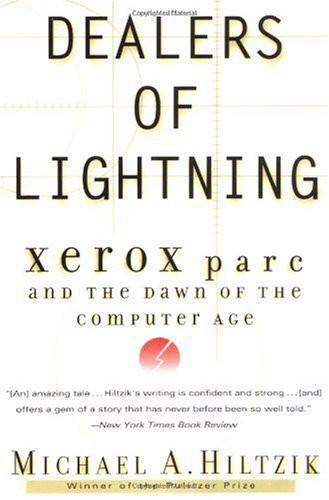
Dealers of Lightning
by
Michael A. Hiltzik
Published 27 Apr 2000
His idea was to turn the technology over to a young, hungry company with a modest cost structure—one that would not dither endlessly about whether a promising innovation would fit into its tradition-encrusted product line but would simply march ahead (while paying Xerox royalties). A company, say, like Apple. The idea was not wholly implausible. Apple was coming on strong. Started in the proverbial Silicon Valley garage by Jobs and his high school classmate Steve Wozniak, Apple had successfully negotiated the transition in its product line from kit versions of Woz’s little personal computer to a more versatile version, the Apple II. This machine was unique in the hobbyist market. It came already assembled, with a keyboard (although it required a separate monitor).

Blood in the Machine: The Origins of the Rebellion Against Big Tech
by
Brian Merchant
Published 25 Sep 2023
The textile industry at the time was “the land of opportunity for the energetic and ambitious man with little capital,” according to one economic historian of the Industrial Revolution. In other words: it was an ideal time to launch a start-up. In the late 1700s and early 1800s, many entrepreneurs who embraced new technology did so in humble, rented spaces: old grain storage rooms or empty halls—the cluttered Silicon Valley garages of the day. The equipment necessary to jump-start an operation was not all that expensive—with a modest loan or some saved money, one could afford a few used looms, enough factory space, and even a monthly payment on a steam engine, if your business required it. (Though then, as now, loans were granted on the basis of many factors, including one’s public standing, background, and reputation, limiting who was eligible from the outset.)
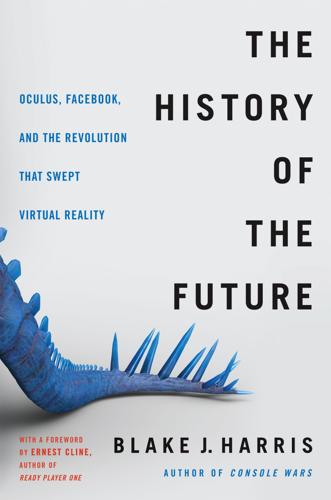
The History of the Future: Oculus, Facebook, and the Revolution That Swept Virtual Reality
by
Blake J. Harris
Published 19 Feb 2019
Although Jeri Ellsworth, thirty-eight, hadn’t been in the games industry as long as most at Valve, her ambitious, retro-fueled DIY projects had been turning heads in the tech community for nearly a decade, beginning in 2004, when Ellsworth took the circuitry of a Commodore 64—that beloved home computer, first introduced in 1982—and managed to condense it down to a single computer chip. This chip was then tucked into a joystick, fortified with classic games, then productized by a company called Mammoth Toys, which sold hundreds of thousands of these play-on-your-TV devices on the QVC. “Ms. Ellsworth is demonstrating that the spirit that once led from Silicon Valley garages to companies like Hewlett-Packard and Apple Computer can still thrive,” cheered a 2004 profile in the New York Times. That can-do spirit led Ellsworth to short stints at tech companies (like Xilient, NewTek, and Ubicom), but it wasn’t until 2011 that she ended up at Valve, a place where she could see herself for years to come.
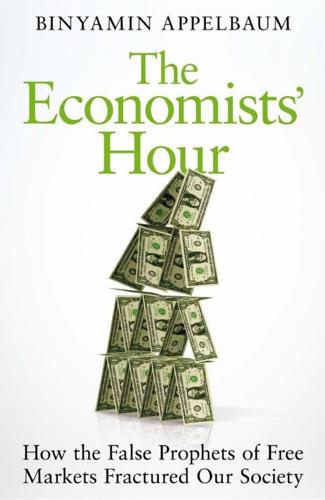
The Economists' Hour: How the False Prophets of Free Markets Fractured Our Society
by
Binyamin Appelbaum
Published 4 Sep 2019
There was a simple explanation for AT&T’s generosity: the federal government forced the company to share its inventions as part of an aggressive, carefully considered, and wide-ranging campaign to prevent large and powerful companies from hoarding innovations.3 To “open up the electronics field,” regulators required more than one hundred companies to license patents between 1941 and 1959.4 General Electric shared the secrets of its lightbulbs; IBM published the recipe for its mainframe computer.5 A generation later, the federal government intervened again, forcing IBM to let others write software for its computers. New companies sprouted, including Micro-Soft, founded by Bill Gates and Paul Allen in April 1975. The mythology of the computer revolution, of libertarians developing ideas in Silicon Valley garages, is usually narrated without any mention of the role played by government. It was antitrust regulation that opened the market and allowed those ideas to bloom. Limiting the market power of large corporations was a distinctly American tradition. Americans in the nineteenth century saw themselves as a nation of yeoman farmers, craftsmen, and storekeepers, where every man was his own master, or had reason to believe he could be someday.
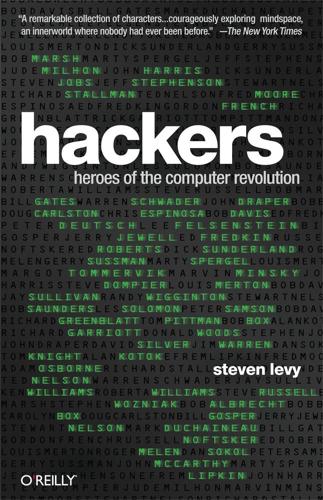
Hackers: Heroes of the Computer Revolution - 25th Anniversary Edition
by
Steven Levy
Published 18 May 2010
Money was the means by which computer power was beginning to spread, and the hackers who ignored that fact were destined to work in (perhaps blissful) solipsism, either in tight, ARPA-funded communities or in meager collectives where the term “hand-to-mouth” was a neat analogy for a “chip-to-machine” existence. The West Coast Computer Faire had been the resounding first step of hardware hackers making their move from Silicon Valley garages into the bedrooms and dens of America. Before the end of 1977, the other shoe dropped. Megamillion-dollar companies introduced computer-terminal combinations requiring no assembly, computers to be sold like appliances. One of those machines was the Commodore PET, designed by the man who devised the same 6502 chip that was the core of the Apple.
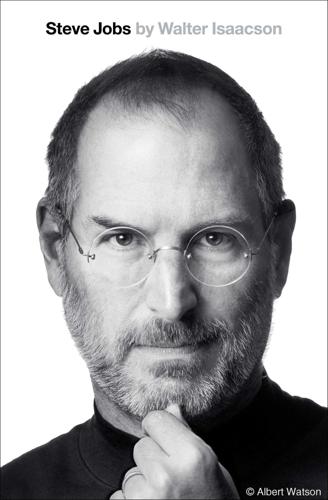
Steve Jobs
by
Walter Isaacson
Published 23 Oct 2011
It was basically a calculator capable of multiplying numbers entered by a set of switches and displaying the results in binary code with little lights. When it was finished, Fernandez told Wozniak there was someone at Homestead High he should meet. “His name is Steve. He likes to do pranks like you do, and he’s also into building electronics like you are.” It may have been the most significant meeting in a Silicon Valley garage since Hewlett went into Packard’s thirty-two years earlier. “Steve and I just sat on the sidewalk in front of Bill’s house for the longest time, just sharing stories—mostly about pranks we’d pulled, and also what kind of electronic designs we’d done,” Wozniak recalled. “We had so much in common.